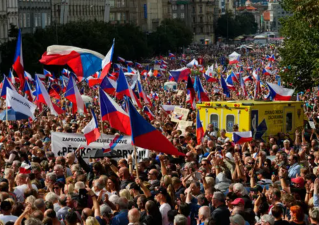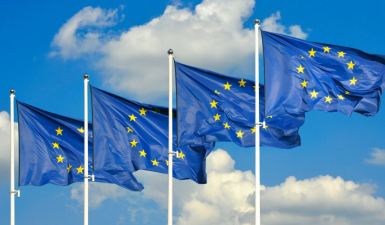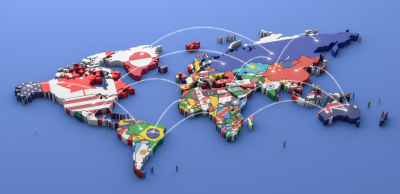The spark of a border conflict in one country could ignite a global economic crisis; a single technology conference could reshape the international power structure. These seemingly isolated events, like the first domino, can shake up the entire world. When these "small events" collide with the power dynamics of major powers, who will define the future?
Characteristics of International News Reporting and Communication
- Politicized Reporting
News media are the voices of the people. Journalism and public opinion work is inherently political, and international news reporting is even more political, requiring a national perspective and disseminating the voice of the nation.
- Diversified Communication Channels
Currently, international news reporting channels are diversifying. While traditional media holds an important position, they are no longer the sole channel. New media based on mobile platforms have emerged as a rising star, even surpassing traditional media as the preferred choice for the majority. Compared to traditional media channels, mobile platforms offer numerous advantages, including rapid dissemination, easily accessible content, a wide audience, fewer commentary restrictions, and a variety of media formats, all of which better align with the public's news and information needs.
- Diversified Audiences
In the context of global economic integration, individuals are increasingly connected to the world, undoubtedly leading to a growing public interest in international affairs. Against this backdrop, the audience for international news is no longer limited to a specific demographic but extends to all walks of life. Any news story, regardless of location, can become a hot topic due to its widespread attention.
As international news reaches audiences from all walks of life and with varying levels of education, the diversity of its audience is a key characteristic of international news reporting and dissemination.
In this era of deepening globalization, international news is like a tightly woven thread, connecting the destinies of countries around the world. From fierce geopolitical battles to subtle shifts in the economic landscape; from groundbreaking technological breakthroughs to heartwarming stories of cultural exchange, the international stage is filled with exciting and far-reaching dramas every day. Paying attention to international news is no longer the exclusive domain of a select few; it is a necessary requirement for each of us to gain insight into the world, plan our lives, and understand diversity. It can help us penetrate the information fog, discern the underlying logic behind international relations, and grasp the general trends of the times. Next, we'll review several recent international hotspots that have captured global attention.

Geopolitical Game: New Developments in the Russia-Ukraine Conflict
- Kyiv Underwent Another Airstrike: Where Does the Situation Go?
On December 31st, local time, explosions were heard in Kyiv, the Ukrainian capital. The Kyiv City Military and Political Administration subsequently confirmed that the city had been attacked by a Russian ballistic missile. Missile fragments were found in the Dalnytskyi district on the left bank of the city, and some missile debris landed on a private residence. Fortunately, no casualties were reported. At the time of the incident, Kyiv's air defense sirens were sounded, and its air defense systems were operational. This isn't the first time Kyiv has faced such a dangerous situation; similar scenarios have occurred repeatedly since the outbreak of the Russia-Ukraine conflict. This airstrike, occurring just before New Year's Eve, cast a shadow over the already tense situation and plunged the people of Kyiv into further panic amidst the cold winter weather. While Russia has yet to officially respond, past actions suggest such attacks are often a response to recent Ukrainian military actions or external intervention. The conflict continues to this day, with the two sides locked in a stalemate in areas like Bakhmut and Zaporizhia. Behind each airstrike and artillery bombardment lies a fierce clash of strategic intentions. With the arrival of winter, both Russia and Ukraine face numerous challenges, including logistical supplies and troop rest. The recent airstrike in Kyiv has undoubtedly escalated the situation, making the future trajectory of the battlefield increasingly uncertain and the opportunity for peace talks looming amid the smoke of war.
- What are the considerations behind US and European attitudes toward Ukraine?
Recently, US and European aid and attitudes toward Ukraine have shifted. In the US, Congress is divided over the budget for aid to Ukraine, with some lawmakers concerned that unlimited aid would entangle the US in a "quagmire of war" and consume significant financial and material resources. However, the Biden administration remains committed to Ukraine, announcing additional military aid, including advanced air defense systems and precision-guided weapons, in an attempt to bolster Ukraine's defenses, curb Russian expansion, and maintain its geopolitical dominance in Europe. In Europe, as the energy crisis eased, the EU finalized €50 billion in aid to Ukraine, demonstrating solidarity. However, previous hesitation by countries like Hungary also reflected divisions within the EU over the extent and method of support for Ukraine, with countries balancing their own economic recovery, energy security, and geopolitical stability, resulting in divergent positions.
The Polish Defense Minister announced the establishment of a NATO-Ukraine Education, Analysis, and Training Center in Poland to provide tactical training to the Ukrainian military and enhance its combat capabilities. This move demonstrates NATO's determination to further intervene and transform Ukraine into a frontline against Russia. However, Russia has consistently stressed that NATO's move would only add fuel to the fire and increase the risk of spillover. Behind the US and European positions lies a complex web of interests: they want to use Ukraine to balance Russia, but they also fear the conflict could spiral out of control and backfire on them. Their vacillation between sanctions and peacemaking, between support and wait-and-see measures, has led to a fluctuating situation in Ukraine.







